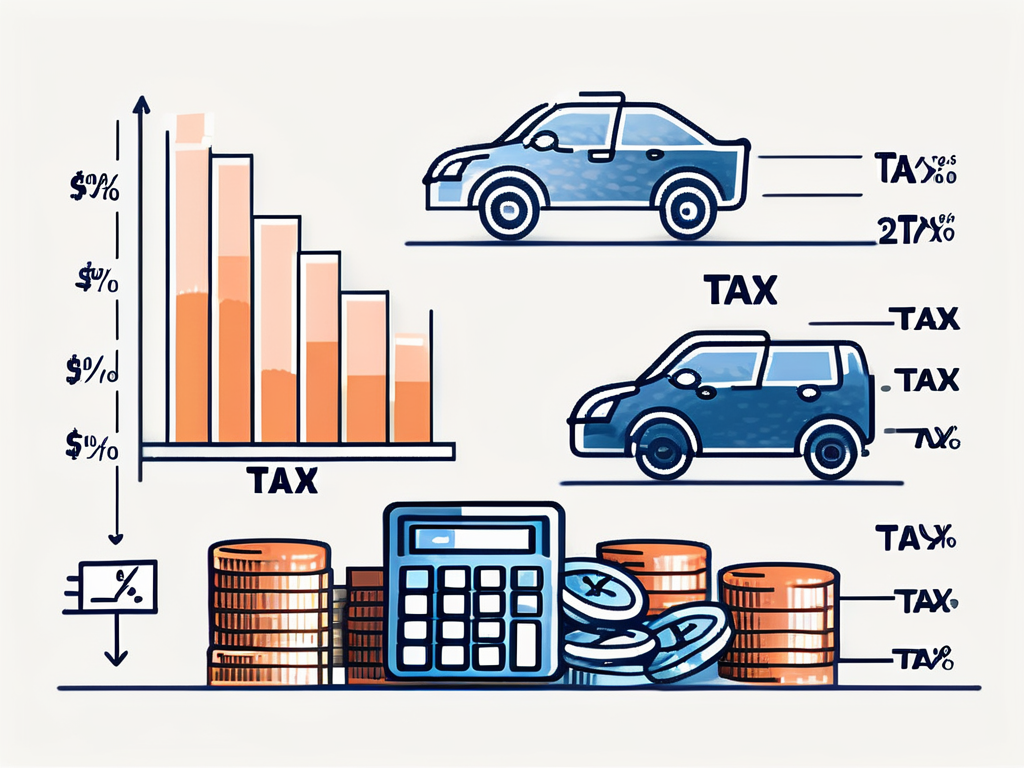Welcome, dear reader, to the wild, wacky, and occasionally hair-pulling world of business tax services! If you’ve ever wondered what a tax rate is, or if you’ve ever found yourself staring blankly at a tax form, this glossary entry is for you. We’ll be diving into the deep end of the tax pool, so grab your floaties and let’s get started!
Now, you might be thinking, “Tax rate? Isn’t that just a percentage of my income that the government takes?” Well, yes and no. It’s a bit more complicated than that, and by “a bit” we mean “a lot”. So let’s buckle up and get ready for a wild ride through the labyrinthine world of business tax services!
What is a Tax Rate?
Imagine you’re a pirate, and you’ve just found a treasure chest full of gold. But before you can start counting your doubloons, Captain Government swoops in and says, “Arr matey, I’ll be taking a portion of that treasure!” That’s essentially what a tax rate is – the portion of your income (or treasure, if you’re a pirate) that the government takes.
But it’s not just a flat percentage. Oh no, that would be too simple. Instead, tax rates can vary depending on a number of factors, including your income level, your filing status, and whether or not you’ve found any buried treasure recently. So let’s dive into the details, shall we?
Income Tax Rates
Income tax rates are like layers of a cake, with each layer representing a different income bracket. The more you earn, the more layers of tax cake you have to eat. This is known as a progressive tax system, and it’s the system used by most countries, including the good ol’ US of A.
Each layer of the tax cake has a different tax rate. So for example, if you earn $10,000, you might only have to eat the first layer of the cake, which has a tax rate of 10%. But if you earn $100,000, you’ll have to eat several layers of the cake, each with a higher tax rate. Yummy!
Corporate Tax Rates
Corporations are like big, fancy pirate ships, and they also have to pay taxes. The corporate tax rate is the percentage of a corporation’s profits that are taken by the government. In the US, the corporate tax rate is currently a flat 21%, which is like having to give up one fifth of your treasure chest. Arr!
However, corporations have a lot of tricks up their sleeves to reduce their tax burden. These can include things like deductions, credits, and loopholes, which are like secret treasure maps that lead to lower taxes. But that’s a topic for another day!
Types of Tax Rates
Now that we’ve covered the basics, let’s delve into the different types of tax rates. There are three main types: marginal, average, and effective. If you’re thinking, “Wait, there’s more than one type of tax rate?” don’t worry, we’re just as surprised as you are.

Each of these types of tax rates gives a different perspective on how much tax you’re paying. Think of them as different lenses through which to view your tax burden. And just like with a pair of glasses, the right lens can make everything much clearer.
Marginal Tax Rate
Your marginal tax rate is the tax rate you pay on the last dollar you earn. It’s like the cherry on top of your tax cake. In a progressive tax system, your marginal tax rate will usually be higher than your average tax rate, because the more you earn, the higher your tax rate.
Knowing your marginal tax rate can be useful for planning purposes. For example, if you’re considering taking on some extra work, knowing your marginal tax rate can help you figure out how much of that extra income will actually end up in your pocket, and how much will end up in Captain Government’s treasure chest.
Average Tax Rate
Your average tax rate is the total tax you pay divided by your total income. It’s like taking a bite of every layer of your tax cake and then averaging out the flavors. Your average tax rate gives you a broad overview of your overall tax burden.
While your average tax rate doesn’t have the same planning utility as your marginal tax rate, it can still be a useful metric. For example, if you’re comparing tax burdens across different countries, looking at average tax rates can give you a good idea of how they stack up.
Effective Tax Rate
Your effective tax rate is similar to your average tax rate, but it takes into account tax deductions and credits. It’s like taking a bite of your tax cake, but then getting to spit out the parts you don’t like. Your effective tax rate gives you a more accurate picture of your actual tax burden.
Knowing your effective tax rate can be especially useful if you’re eligible for a lot of tax deductions and credits. It can help you figure out how much of your income you’ll actually get to keep, and how much will go to feeding Captain Government’s insatiable appetite for treasure.
How to Calculate Your Tax Rate
Now that we’ve covered the different types of tax rates, let’s talk about how to calculate them. Don’t worry, we won’t be asking you to do any complex math. That’s what calculators are for!
Calculating your tax rate involves a few simple steps. First, you’ll need to know your taxable income. This is your total income minus any deductions and exemptions. Next, you’ll need to know the tax rates for your income bracket. Finally, you’ll need to do a little bit of arithmetic. But don’t worry, we’ll walk you through it!
Calculating Your Marginal Tax Rate
To calculate your marginal tax rate, you’ll need to look at the tax rate for your highest income bracket. This is the tax rate you pay on the last dollar you earn. So if you’re in the 22% tax bracket, your marginal tax rate is 22%.
However, keep in mind that your marginal tax rate is not the same as your overall tax rate. Just because you’re in the 22% tax bracket doesn’t mean you’re paying 22% in taxes on all your income. Remember, in a progressive tax system, different portions of your income are taxed at different rates.
Calculating Your Average Tax Rate
To calculate your average tax rate, you’ll need to divide your total tax by your total income. So if you paid $10,000 in taxes on an income of $50,000, your average tax rate would be 20%.
Keep in mind that your average tax rate is just that – an average. It doesn’t take into account the progressive nature of the tax system, and it doesn’t reflect the tax rate on your last dollar earned. But it can still give you a good idea of your overall tax burden.
Calculating Your Effective Tax Rate
To calculate your effective tax rate, you’ll need to take into account tax deductions and credits. These can significantly reduce your tax burden, so it’s important to include them in your calculations.
First, calculate your taxable income by subtracting any deductions and exemptions from your total income. Then, divide your total tax by your taxable income. So if you paid $8,000 in taxes on a taxable income of $40,000, your effective tax rate would be 20%.
Conclusion
And there you have it, folks! A comprehensive, hilarious, and hopefully not too confusing guide to tax rates and business tax services. We’ve covered everything from income and corporate tax rates to marginal, average, and effective tax rates, and even how to calculate them.
So the next time Captain Government comes for your treasure, you’ll be ready. You might not be able to avoid paying taxes, but at least you’ll understand them a little better. And who knows? You might even find a few buried treasure maps along the way!


